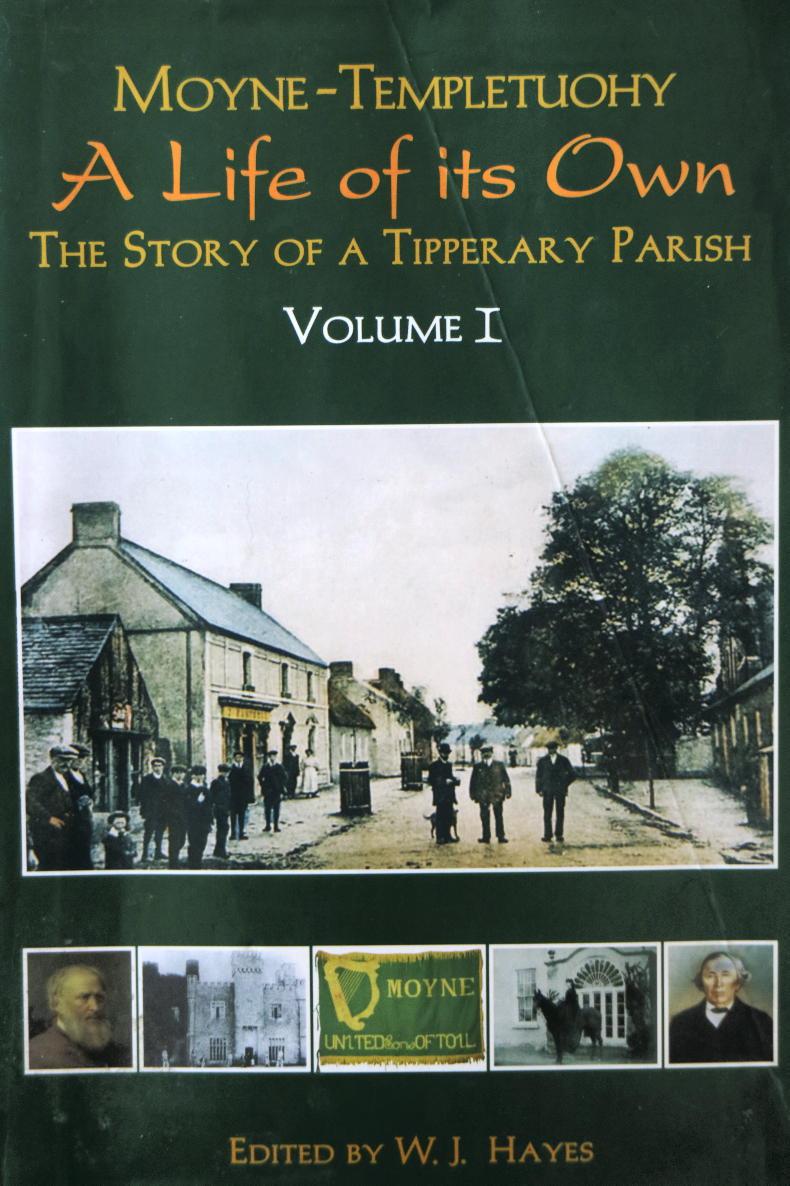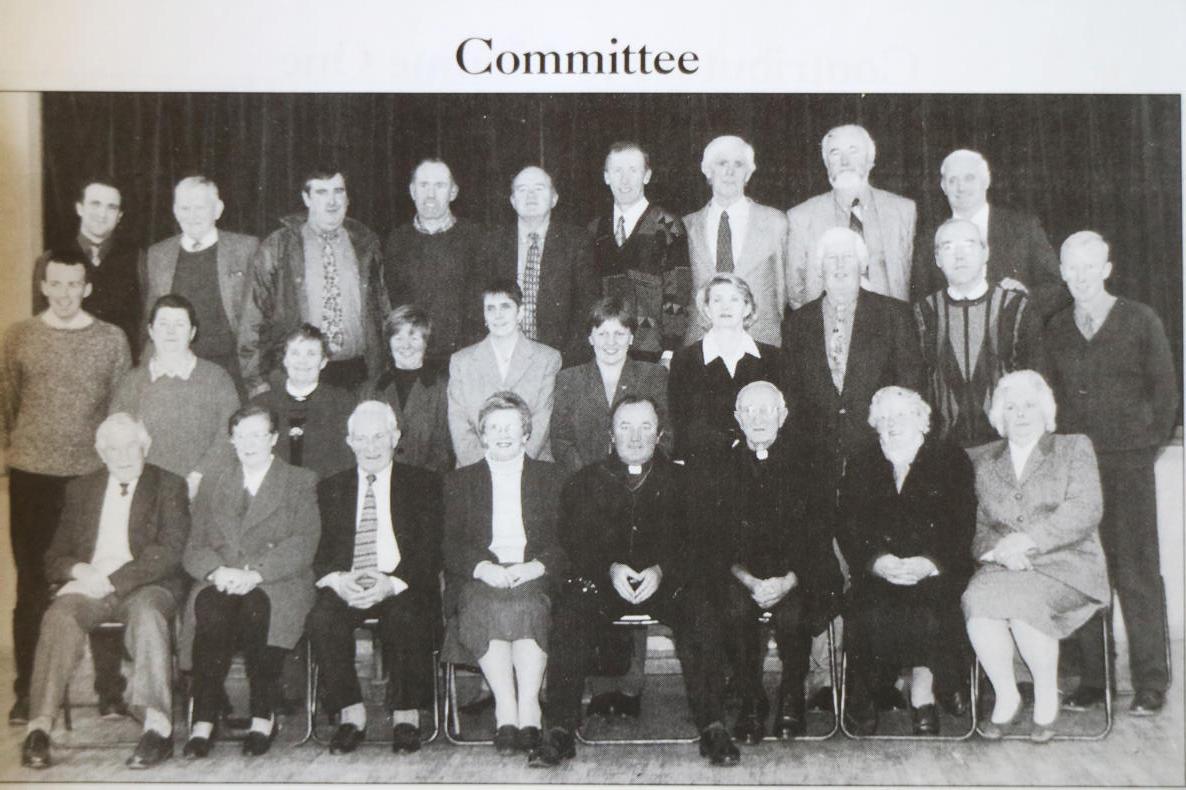The Tipperary parish of Moyne/Templetuohy may not be the largest or most well-known in the country, but that has not stopped it from producing what is probably the most comprehensive local history of any parish in Ireland.

A Life of Its Own - The Story of a Tipperary Parish is a 1,600-page chronicle of life in Moyne/Templetuohy, dating from its earliest history up to the millenium.
Published in 2002, the original plan was for a 300-page book on the local history of the area. The idea grew; however, when members wanted to include photos, maps, family trees and fascimile to the publication. This resulted in ten years of research by both historical and archaeological professionals, as well as the 30 dedicated local members of the historical society.
Once complete, the publication comprised of three hard-cover volumes and an index – all of this from a parish once described, at the beginning of the 20th century by a local priest, to contain “nothing to excite the curiosity or repay the interest of the antiquarian or the traveller”.
George Cunningham, a well-known historian from Roscrea, was invited to give advice on how best to research material and knock on doors to collect photographs and stories (since so much local history has been passed down orally). We set up a finance committee and searched through local news archives in our county library in Thurles. We searched through records from the National Library and National Archives and studied the findings from the Lisheen Mine Archaeological project, carried out by Margaret Gowan et al in the 1990s.
Once complete, it was only when we saw the two full pages of acknowlegments in volume one did we realise the full extent of the amount of work we had put in to this project.
The real success of any local history group stems from not being afraid to call upon experts; whose insights will sort out any potential problems and will enhance the project overall. The Moyne/Templetuohy Historical Society called on the likes of Dr Valerie Hall, senior lecturer in past environmental studies at Queens University Belfast, for our project.
We also acquired the services of archaeologist Dr Siobhan Geraghty, Catherine O’Brien of UCD, Margaret Cormack and William J Hayes, who was the project’s general editor, and Valentine Trodd, who is an editor at Scéal Publications.
The three volumes consist of 19 chapters, covering the living landscape of the parish, the early Christian period, the 17th, 18th and 19th centuries in the parish (including the Famine period and its affects), and sport in the parish through the years.
The most important three people in the history group were the proof readers. Night after night, they pored over every word and every line until they got it right. The index was compiled by Julitta Clancy, a registered indexer from Co Meath. These volumes are in short supply, but a few may be availed.
The committee, editor, printers and all who participated in this magisterial enterprise deserve our gratitude – they did it for their community.
From Moyne/Templetuohy: A Life of Its Own Vol 1
Chapter Nine: This Distressed Land (The Famine Period): Templetuohy Soup Kitchen; written by William J Hayes and George Cunningham
Being reduced to depending on hand-outs of rations for survival was demeaning enough, but the method of distribution was even more detested. Each recipient was required to bring a bowl or pot and stand in a line until his or her turn came. In some places, it was reported that the people were ‘too proud to fetch soup’, while they did not mind going a distance for meal.
When the soup kitchen opened in Templetuohy in early April, a crowd gathered outside the depot, started shouting that they would not have any soup, and ‘ill treated a female who had been engaged to attend to the soup kitchen’
[...]The crowd apparently wanted to get their ration in uncooked form, as it was less demeaning...
[...]Although the grim choice was between the soup kitchen or starvation, the destitute labourers of the Templetuohy district apparently continued to refuse the soup. On 13 May, Rev Thompson addressed another letter to the Lord Lieutenant stating that little progress was being made in the district toward the establishment and bringing into operation of the new system.
‘The people seem determined,’ he wrote, ‘in having their own way, refuse the soup, although they are literally famishing with hunger. The joint Poor Relief Committees of Templetuohy and Moyne have met with opposition on this act.’ In a postscript at the end of the letter he penned a final plea: ‘If it be possible, let the works in this neighbourhood continue a little longer, otherwise the people must perish’.
Email ICL@farmersjournal.ie to share the story of your parish.
The Tipperary parish of Moyne/Templetuohy may not be the largest or most well-known in the country, but that has not stopped it from producing what is probably the most comprehensive local history of any parish in Ireland.

A Life of Its Own - The Story of a Tipperary Parish is a 1,600-page chronicle of life in Moyne/Templetuohy, dating from its earliest history up to the millenium.
Published in 2002, the original plan was for a 300-page book on the local history of the area. The idea grew; however, when members wanted to include photos, maps, family trees and fascimile to the publication. This resulted in ten years of research by both historical and archaeological professionals, as well as the 30 dedicated local members of the historical society.
Once complete, the publication comprised of three hard-cover volumes and an index – all of this from a parish once described, at the beginning of the 20th century by a local priest, to contain “nothing to excite the curiosity or repay the interest of the antiquarian or the traveller”.
George Cunningham, a well-known historian from Roscrea, was invited to give advice on how best to research material and knock on doors to collect photographs and stories (since so much local history has been passed down orally). We set up a finance committee and searched through local news archives in our county library in Thurles. We searched through records from the National Library and National Archives and studied the findings from the Lisheen Mine Archaeological project, carried out by Margaret Gowan et al in the 1990s.
Once complete, it was only when we saw the two full pages of acknowlegments in volume one did we realise the full extent of the amount of work we had put in to this project.
The real success of any local history group stems from not being afraid to call upon experts; whose insights will sort out any potential problems and will enhance the project overall. The Moyne/Templetuohy Historical Society called on the likes of Dr Valerie Hall, senior lecturer in past environmental studies at Queens University Belfast, for our project.
We also acquired the services of archaeologist Dr Siobhan Geraghty, Catherine O’Brien of UCD, Margaret Cormack and William J Hayes, who was the project’s general editor, and Valentine Trodd, who is an editor at Scéal Publications.
The three volumes consist of 19 chapters, covering the living landscape of the parish, the early Christian period, the 17th, 18th and 19th centuries in the parish (including the Famine period and its affects), and sport in the parish through the years.
The most important three people in the history group were the proof readers. Night after night, they pored over every word and every line until they got it right. The index was compiled by Julitta Clancy, a registered indexer from Co Meath. These volumes are in short supply, but a few may be availed.
The committee, editor, printers and all who participated in this magisterial enterprise deserve our gratitude – they did it for their community.
From Moyne/Templetuohy: A Life of Its Own Vol 1
Chapter Nine: This Distressed Land (The Famine Period): Templetuohy Soup Kitchen; written by William J Hayes and George Cunningham
Being reduced to depending on hand-outs of rations for survival was demeaning enough, but the method of distribution was even more detested. Each recipient was required to bring a bowl or pot and stand in a line until his or her turn came. In some places, it was reported that the people were ‘too proud to fetch soup’, while they did not mind going a distance for meal.
When the soup kitchen opened in Templetuohy in early April, a crowd gathered outside the depot, started shouting that they would not have any soup, and ‘ill treated a female who had been engaged to attend to the soup kitchen’
[...]The crowd apparently wanted to get their ration in uncooked form, as it was less demeaning...
[...]Although the grim choice was between the soup kitchen or starvation, the destitute labourers of the Templetuohy district apparently continued to refuse the soup. On 13 May, Rev Thompson addressed another letter to the Lord Lieutenant stating that little progress was being made in the district toward the establishment and bringing into operation of the new system.
‘The people seem determined,’ he wrote, ‘in having their own way, refuse the soup, although they are literally famishing with hunger. The joint Poor Relief Committees of Templetuohy and Moyne have met with opposition on this act.’ In a postscript at the end of the letter he penned a final plea: ‘If it be possible, let the works in this neighbourhood continue a little longer, otherwise the people must perish’.
Email ICL@farmersjournal.ie to share the story of your parish.







 This is a subscriber-only article
This is a subscriber-only article










SHARING OPTIONS: